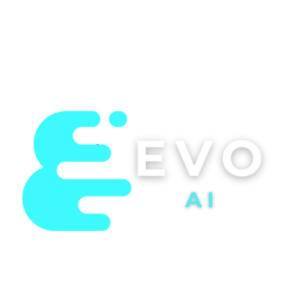Podcast Transcript
Introduction:
Welcome to the inaugural episode of EVO AI, titled ‘What is AI?’ Join us today as we begin a journey into the heart of Artificial Intelligence, demystifying its concepts, and exploring its game-changing role in business. Your path to understanding AI starts here. Let’s dive in!
Section 1: Artificial Intelligence (AI) and Machine Learning
Definition: AI is the field of computer science dedicated to creating intelligent agents capable of reasoning, learning, and acting autonomously. Machine learning, a subset of AI, teaches computers to learn from data without explicit programming.
Context: Imagine AI as the ‘physics’ of technology, forming the fundamental principles that govern intelligent systems. Within this framework, machine learning serves as the laboratory, a specialized environment where models are trained and refined, learning to make predictions or decisions based on data
Section 2: Supervised vs. Unsupervised Learning
Definition: Supervised learning requires labelled data, while unsupervised learning works with unlabelled data. Labelling means attaching tags like names, types, or numbers to the data.
Example: Supervised learning is like using a GPS with specific directions, guiding you turn by turn to reach your destination. Unsupervised learning, on the other hand, is akin to exploring a new city without a map, finding your way through patterns and landmarks, and discovering unexpected routes.
Section 3: Deep Learning and Generative Models
Definition: Deep learning uses artificial neural networks, akin to the human brain, to process complex patterns. Generative models create new data instances, while discriminative models differentiate between data types.
Context: Think of deep learning as a seasoned financial analyst, meticulously identifying patterns and trends in vast amounts of data to forecast future market behaviours. Meanwhile, generative models are like the research and development department of a cutting-edge company, utilizing existing data to innovate, create new products, or devise entirely new ways of solving complex business problems.
Section 4: Understanding Generative AI
Definition: Generative AI is a type of AI that creates new content based on what it has learned from existing content.
Business Context: Think of Generative AI as a content creator that can write articles, design images, or even compose music for your brand.
Section 5: Applications in Various Business Sizes
Small Businesses: Tailored marketing, optimized inventory. Medium Businesses: Advanced customer segmentation, automated support. Large Corporations: Global trend analysis, fraud detection.
Section 6: Transformers in AI
Definition: Transformers revolutionized natural language processing by encoding input sequences and decoding them for relevant tasks.
Business Context: Transformers are a foundational technology behind many AI applications. While developing and training Transformers might be the domain of large tech companies, businesses of all sizes can benefit from the applications powered by these models. Whether it’s a ChatBot for customer service or a tool for analyzing market trends, small and medium-sized businesses are increasingly leveraging AI solutions that rely on Transformers to enhance their operations and customer engagement.
Section 7: Challenges and Solutions in AI
Understanding Hallucinations in Models:
Definition: Hallucinations in AI refer to the system generating false or unrelated information.
What You Can Do About It: Entrepreneurs can’t usually modify the underlying models, but they can be aware of this risk, choose reliable AI providers, and use prompt engineering to guide AI responses.
The Importance of Training Data:
Definition: Training data are examples used to teach an AI system how to perform a task.
What You Can’t Do About It: Most businesses don’t have control over the original training data, so it’s vital to select AI products developed with quality data.
Data Quality – A Critical Concern:
Definition: Data quality means ensuring that the data used in AI are accurate, consistent, and relevant.
What You Can’t Do About It: Entrepreneurs usually can’t influence the data quality in pre-built AI tools, but they should seek providers who adhere to high standards.
Prompt Engineering and Detection of Hallucinations:
Definition: Prompt engineering is the art of crafting queries to guide an AI system’s responses, while the detection of hallucinations involves recognizing when the AI is generating incorrect information.
What You Can Do About It: This is an area where businesses can take action! By learning prompt engineering techniques, you can gain more control over the AI’s output, even without access to the underlying models or data.
Business Lesson for All Entrepreneurs:
The world of AI may seem like a complex landscape, and while you might not have control over the underlying technology, you can learn techniques like prompt engineering to better steer the tools you use. Whether you’re a startup, a large corporation, or simply AI-curious, understanding these concepts can help you navigate the ever-evolving terrain of artificial intelligence. Making informed choices about the AI products you use and developing skills to direct their output can make AI not just a buzzword but an essential part of your business toolkit.
Section 8: Text-to-X Models in Business Operations
Introduction: Text-to-X models encompass a wide range of applications that can translate textual input into various outputs. Let’s explore how these models are shaping business solutions.
Text-to-text: Translating Languages
Definition: Text-to-text models take a piece of text in one language and translate it into another language.
Business Example: A multinational company can use text-to-text translation to instantly convert product descriptions, customer service replies, or legal documents, bridging communication gaps across global branches.
Text-to-image: Turning Descriptions into Pictures
Definition: Text-to-image models read a textual description and create a visual representation or image based on that text.
Business Example: A furniture store could offer a service where customers describe their dream living room, and the model generates images reflecting those descriptions, aiding in personalized shopping experiences.
Text-to-video: Making Videos from Scripts
Definition: Text-to-video models generate video content based on textual input, such as a script, storyline, or set of instructions.
Business Example: A marketing agency might use text-to-video technology to turn client briefs into dynamic video ads quickly, saving time on prototyping and production.
Text-to-task: Performing Actions like Navigating a Website
Definition: Text-to-task models are trained to perform specific tasks or actions based on text input, from navigating web interfaces to automating workflows.
Business Example: A small online retailer could implement text-to-task models to automate inventory updates, shipping tracking, or even customer support chatbots, streamlining day-to-day operations.
Conclusion for Section 8: Text-to-X models are a versatile toolbox for businesses, offering solutions that enhance efficiency, creativity, and customer engagement. From translating languages to automating tasks, the applications are as diverse as the businesses that can benefit from them.
Section 9: Q&A Segment for Businesses
Q: Can AI replace human creativity in marketing?
A: No, but it can enhance it. Think of AI as your creative assistant, helping to generate ideas and automate processes, while humans provide unique insights and emotional connections.
Q: How can a small business start with AI?
A: Start small, like using AI-driven insights for social media advertising. There are many accessible tools designed for small businesses that require no coding skills, allowing them to leverage AI for targeted marketing and customer engagement.
Q: Will AI automate all jobs in the future?
A: AI will automate many repetitive tasks, but not all jobs. There will always be a need for human judgment, empathy, and complex decision-making. Collaboration between humans and AI can lead to greater efficiency and new opportunities.
Q: How can AI impact customer service for businesses?
A: AI can be used to automate customer support through chatbots, provide personalized recommendations, and analyze customer feedback. This can lead to faster response times and more personalized service, improving customer satisfaction.
Q: What risks do businesses face when implementing AI?
A: Risks include data privacy concerns, potential biases in AI models, and reliance on technology that might fail. Careful planning, adherence to regulations, and ethical considerations can mitigate these risks.
Q: How is AI transforming supply chain management?
A: AI can predict demand, optimize inventory, automate warehousing, and enhance transportation logistics. By utilizing AI, supply chain management becomes more accurate and efficient, reducing costs, and improving sustainability.
Q: Can AI help in making strategic business decisions?
A: Yes, AI can analyze vast amounts of data to uncover trends, risks, and opportunities. It helps leaders make informed decisions quickly, supporting overall business strategy and innovation.
Q: How will AI affect the creative industries, like design or writing?
A: AI can assist in generating initial concepts, automating routine tasks, and providing data-driven insights. Creatives can leverage AI to enhance their work, but human intuition and emotional intelligence remain irreplaceable in these fields.
Q: What opportunities are there for mid-sized businesses in leveraging AI?
A: Mid-sized businesses can use AI for personalized marketing, predictive maintenance, enhanced customer service, and streamlined operations. AI provides scalable solutions that can grow with the business, offering competitive advantages without massive investments.
Conclusion for Section 9: The evolution of generative AI presents both challenges and opportunities for businesses across various sectors. It’s a dynamic tool that, when implemented thoughtfully and ethically, can redefine efficiency, creativity, customer engagement, and strategic decision-making. Understanding how to harness its potential will be vital for businesses in the coming years.
Conclusion:
From local shops to corporate giants, AI is a transformative tool ready to be harnessed. With an understanding of these definitions and contexts, businesses can strategically implement AI to innovate, grow, and thrive.
That’s a wrap on today’s episode of EVO AI. We’ve delved into the fascinating world of Artificial Intelligence, unlocking insights that are changing the face of business. But the exploration doesn’t end here; there’s always more to discover.
I’m Bogdan Iancu and this has been EVO AI. Together, we’re part of something bigger, a movement towards understanding, innovation, and growth. If you enjoyed our journey today, don’t forget to subscribe and join us again as we continue to explore the future of AI in business. Until next time, keep evolving.
About The Author

Bogdan Iancu
Bogdan Iancu is a seasoned entrepreneur and strategic leader with over 25 years of experience in diverse industrial and commercial fields. His passion for AI, Machine Learning, and Generative AI is underpinned by a deep understanding of advanced calculus, enabling him to leverage these technologies to drive innovation and growth. As a Non-Executive Director, Bogdan brings a wealth of experience and a unique perspective to the boardroom, contributing to robust strategic decisions. With a proven track record of assisting clients worldwide, Bogdan is committed to harnessing the power of AI to transform businesses and create sustainable growth in the digital age.









Leave A Comment